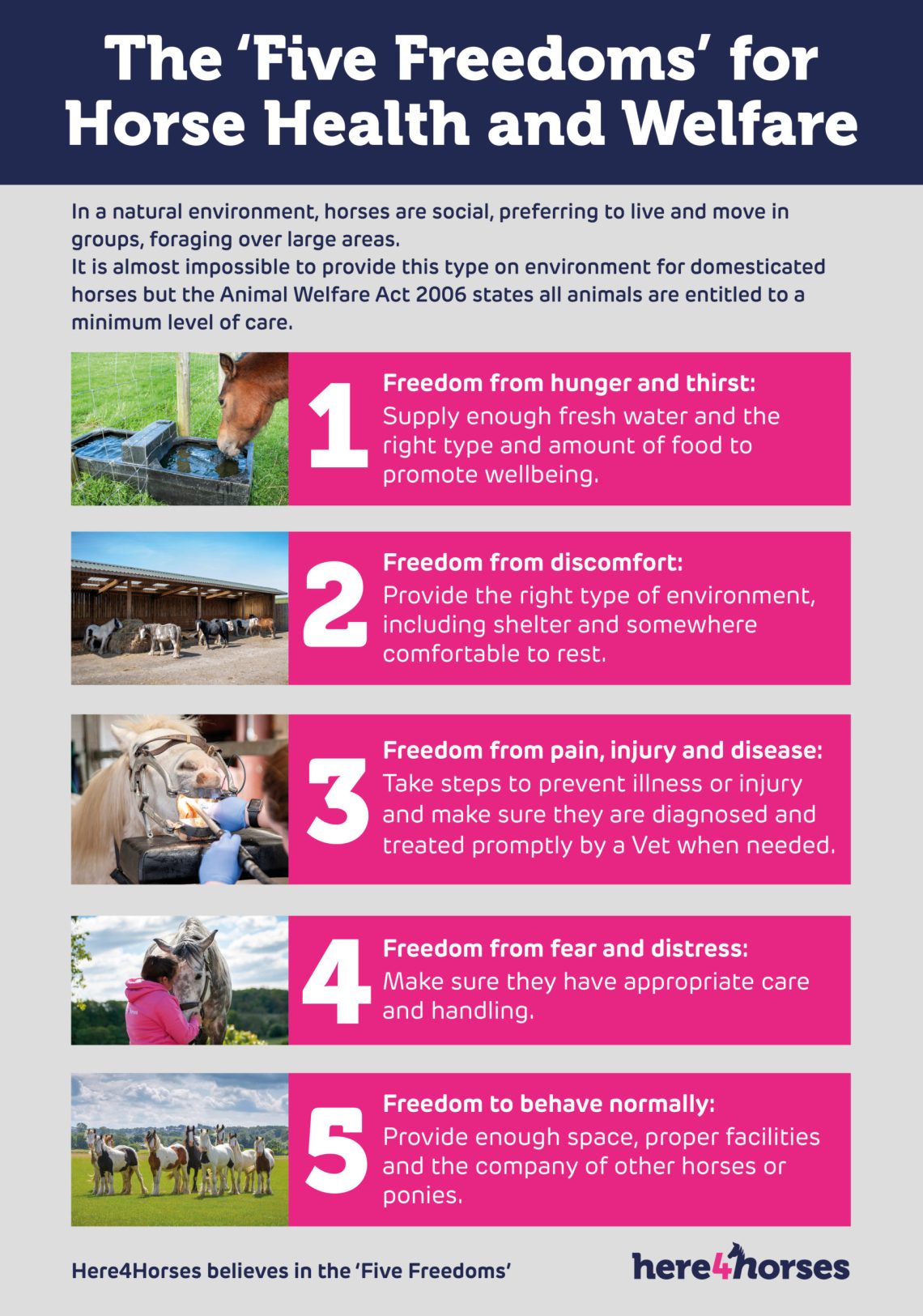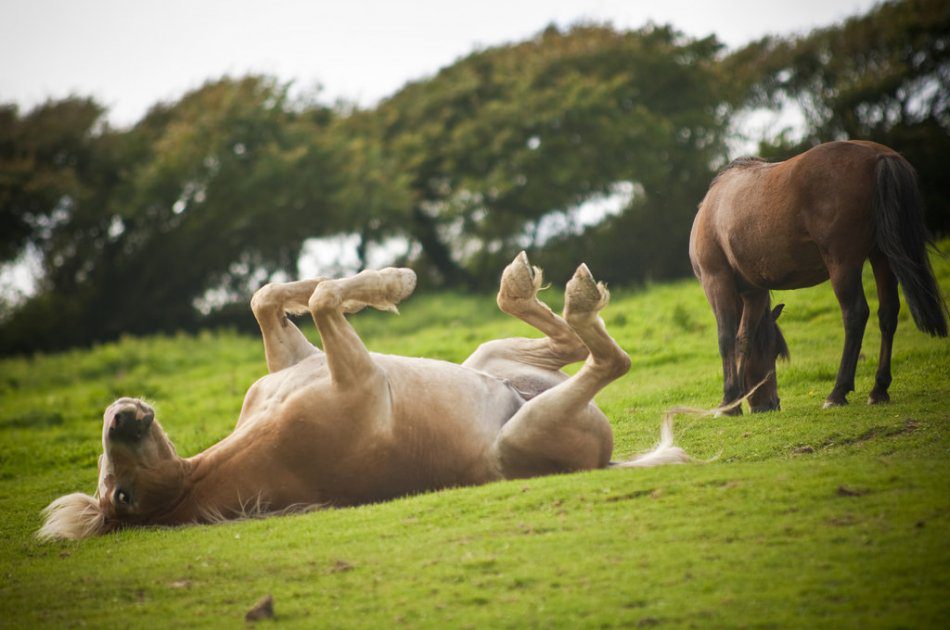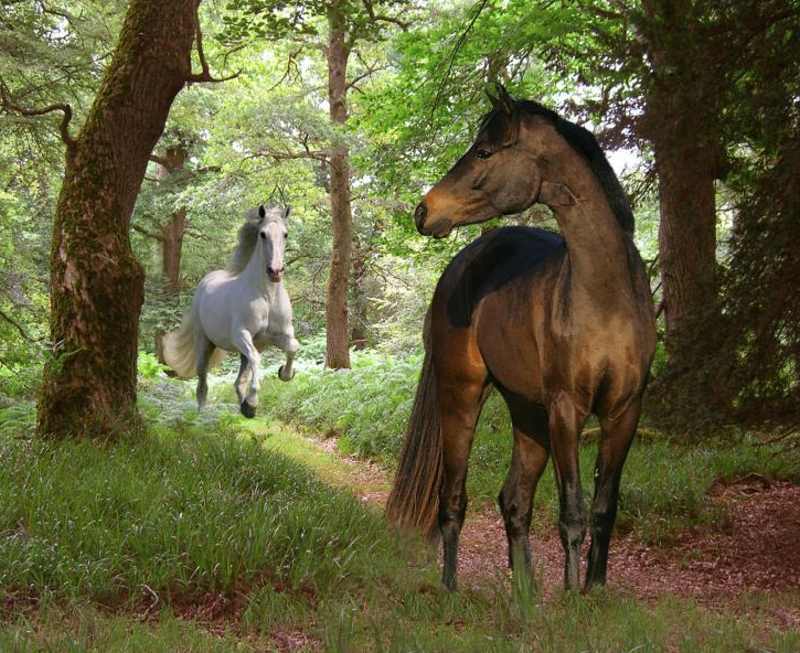
Horse maintenance: 5 freedoms
Every responsible owner is interested in that his pet lives the best possible life and remains healthy and happy. Horses are no exception. Fortunately, an internationally recognized method for assessing animal welfare has now been developed. It’s a concept five freedoms (or the Five Rights). It also applies to horses.

Contents
Horse maintenance: 5 freedoms
Freedom 1: from hunger and thirst
Everything here is quite simple, but at the same time very difficult. Firstly, the horse needs constant access to clean, fresh water. It can be a drinker in a pasture or in a levada, autodrinkers or buckets in a stall. Do not forget to regularly wash water containers. Secondly, a well-composed diet. Unfortunately, there are still stables where the feeding rate is 6 kg of hay and 6 kg of oats per day. As a result, the horse remains hungry for almost the whole day, suffers from diseases of the gastrointestinal tract and does not feel too happy. without food for more than 14 hours in a row. This implies almost unlimited access to hay or grass. Therefore, a horse needs about 16 (sometimes a little less, sometimes more) kg of hay per day. There are horses that do not complain about their appetite so much that they become obese. The so-called “slow feeders” (slow-feeder) have been designed for such “millipedes”. This allows you to limit the consumption of hay, but at the same time does not deprive the horse of the opportunity to supply food to the body for most of the day. As for oats or any other similar feed, 2 kg is, on the contrary, too much, especially for a horse that does not carry heavy loads. The rate of oats is set individually, but if the horse carries light loads or does not work at all, it can do without oats, muesli or other similar feeds without compromising health.
Freedom 2: from discomfort
If the horse is kept in a stable, it must have a stall – large enough so that it can lie on its side and stretch out, otherwise the animal simply will not be able to get enough sleep. The litter must be clean and deep enough. shelters from the scorching sun, rain, snow and strong winds are equipped. These can be natural shelters (for example, trees) or artificial ones (shelters), where horses should have free access.
The harness must be tailored to the specific horse and must not cause pain.
Freedom 3: from injury and disease
Do not neglect preventive measures to prevent diseases: vaccination and deworming. However, keep in mind that at the time of these events, the horse must be healthy. Lattices, fences, feeders must be safe. There should be no debris in the pasture or levada that can injure the horse (for example, broken glass). The grass in the pasture should be enough so that the horse does not starve, but at the same time it should not be too plentiful and juicy – otherwise the horse may “Earn” laminitis. Food in general should be of high quality. Approximately 1 time per month, the horse’s hooves are cleaned. If the horse is sick or injured, it must be treated.
Freedom 4: to implement species-typical behavior
The horse was not created to “turn sour” in the stable. In nature, she traveled long distances, constantly moving in the company of relatives and eating grass (and not always juicy and plentiful). Therefore, your pet should be able to walk (the more, the better) not only under the saddle, but also by itself, and communicate with other horses. The most vulnerable here are stallions. Not every stable is ready to provide them with the appropriate conditions. Therefore, sometimes castration is an artificial, but acceptable solution.

Freedom 5: from grief and suffering
Until now, many horses spend 23 hours a day in the stall, and the remaining hour in training. This is unacceptable. The horse should not be bored. When working with these graceful creatures, it is necessary to take into account the psychology of horses as a species and the characteristics of a particular animal. It is unacceptable to use cruel methods in the process of training and education. It is good if there are toys in the stall and on the walk. Now there is a huge variety of horse toys, some of them you can do yourself. Consider the personal preferences of horses when choosing companions for walking. If the horse is “pressed” on walks, and the territory of the levada or pasture does not allow escape, the “weakest link” will constantly experience fear.
These freedoms are not some “super” conditions taken from the ceiling. This is the minimum that every horse is entitled to. The more owners become concerned about the well-being of their pets, the more stables will appear that offer acceptable living conditions.
You might also be interested in: Man through the eyes of a horse«





